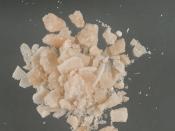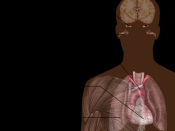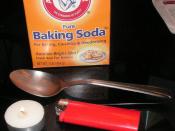Crack cocaine, another form of cocaine base, also is derived from powder cocaine. Unlike the processing of freebase cocaine, converting powder cocaine into crack cocaine does not involve any flammable solvents. The powder cocaine is simply dissolved in a solution of sodium bicarbonate and water. The solution is boiled and a solid substance separates from the boiling mixture. This solid substance, crack cocaine, is removed and allowed to dry. The crack cocaine is then broken or cut into "rocks," each typically weighing from one-tenth to one-half a gram. One gram of pure powder cocaine will convert to approximately 0.89 grams of crack cocaine. The Drug Enforcement Administration estimates that crack rocks are between 75 and 90 percent pure cocaine.
Powder cocaine cannot be smoked unless chemically altered using the dangerous freebasing technique. Late summer of 1985, New York City drug dealers put an end to the need for freebasing powder cocaine.
These same drug entrepreneurs would revolutionize the sale of cocaine and bring terror to the streets of America.
The exact inventor of crack cocaine is unknown, but the lasting effects of their discovery are well documented. The benefits of cocaine base (crack) for the drug dealers have only been surpassed by the problems it has created for society in general. In many ways crack is the perfect drug. As we will see, crack cocaine was a stroke of marketing genius.
Powder cocaine is messy and hard to handle, crack however is a hard rock-like substance easy to handle and conceal. Powder cocaine has to be inhaled or injected. Inhaling cocaine creates a variety of sinus and nasal problems. Inhaling also takes longer for the drug to take affect. Injecting powder cocaine to get a better and faster high became very unpopular with advent of the A.I.D.S. crisis. Powder...



Crack cocaine
Very well written, well explained aspects of why crack cocaine is prefered over powder cocaine by dealer and users alike. Also describes the way the drug is made and used. Highly recommend this essay.
7 out of 7 people found this comment useful.